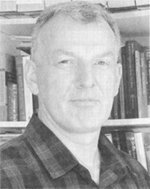Since the Chinese takeover of Tibet in 1959, as thousands of Tibetans have fanned out across the globe, there has been increased interest in all things relating to Tibetan Buddhism, including the sacred arts of the Himalayan region—Tibet, Bhutan, Nepal, Sikkim, and northern India—and surrounding areas. Much of this artwork is in museums and private collections in the West, where it serves as a bittersweet reminder of the once-flourishing monastic centers and teeming dharma life in the lands the exiles left behind.
Among the most compelling works are the thangkas—scroll paintings of deities, lamas, and other dignitaries that are central to Tibetan culture and Buddhist practice. Today, collectors who prize them for their beauty and execution often understand little of their history or spiritual significance. And even scholars, art historians, and Buddhist practitioners at times find the iconography mystifying.

That’s where the Himalayan Art Project comes in. Its website, www.himalayanart.org, is a vast virtual museum with 16,000 images and 13,000 written records of painting, sculpture, murals, prints, textiles, and ritual objects from the Himalayan region. With the most extensive searchable database in its field, the site is a one-stop resource for art lovers, spiritual practitioners, scholars, and collectors.
At one end of the spectrum is the interactive section introducing “kids and friends of all ages” to the strong narrative thrust of Himalayan art. At the other is a set of sophisticated, high-tech research tools. Artwork is catalogued, cross-referenced, and indexed by theme, style, and geographical region, facilitating comparative analysis that until now was difficult, if not impossible. There are bibliographies, articles by experts on art and Buddhism, and links to scholarly venues. One is the Tibetan Buddhist Resource Center (www.tbrc.org), E. Gene Smith’s massive digital archive of original Tibetan texts with biographical information on deities and other portrait subjects. There are even audio links for checking the pronunciation of Tibetan and Sanskrit names.
Visitors to the website can enter a subject in the search engine—say, Gyurme Dorje, a seventeenth-century Nyingma treasure-revealer who founded Mindroling Monastery in Tibet—and an index of related artwork will pop up. Select item number 65032, and an image of a thangka will appear, with a caption detailing its iconography. Click again to see the back of the painting—and zoom in to read a blessing written in Tibetan script.
The site gives visitors unprecedented access to private and institutional collections worldwide, and more are continually being added. (Recent postings include the Norbulingka Institute in Dharamsala, India, and the Freer and Sackler Galleries at the Smithsonian, in Washington, DC.)
Behind all this are two men committed to preserving the artworks as both cultural heritage and living tools of spiritual practice. One is the Himalayan Art Project’s founder and benefactor, Donald Rubin, a New York businessman who with his wife, Shelley, has amassed one of the world’s largest collections of Himalayan art. (Their Rubin Museum of Art will open in New York City in spring 2004.) The other is himalayanart.org’s director, Jeff Watt, an ex-Buddhist monk and Rubin Museum curator who is arguably the world’s leading expert on Tibetan iconography.
An early version of the website was launched in 1997, with the aim of preserving Himalayan art by gathering it under one cyber-roof. “Many of the paintings were originally created in sets of four, eight, or sixteen,” Rubin says. “We wanted to bring the sets back together in some way.” Watt, a translator of Tibetan Buddhist texts in Vancouver, British Columbia, with his own website, was brought to New York in fall 1999 to revamp what is now himalayanart.org.
Watt’s prodigious knowledge of Himalayan art and Tibetan Buddhist iconography emerged from his longtime Buddhist practice and translation of sacred texts. As a teenager, he studied with Dezhung Rinpoche and Sakya Trizin, dropping out of school at seventeen to take monastic vows from the Gyalwa Karmapa. For the next eleven years, Watt trained intensively in India and Canada, with Dudjom Rinpoche, Dilgo Dhyentse Rinpoche, Kalu Rinpoche, and Jetsun Chimey, among other teachers. In 1985 he gave back his monastic ordinations but continued to study and to translate Sakya texts.
Tantric Buddhist practice involves visualizing certain deities, regarded as emanations of the Buddha. “By taking on these various forms in meditation, you transform your neuroses and negative karma,” Watt explains. But Tibet, unlike the West, has no tradition of studying iconography, he notes. “I’d look at these thangkas, and people couldn’t tell me who all the figures were. So I was driven to find out, Who is this? Who knows? And why don’t others know?”
Watt deciphers Tibetan signatures and inscriptions on the artwork and reads sacred and biographical texts to assemble iconographic information for the captions posted on the website. There are historical references to Buddhism, but spiritual content is kept to a minimum; the focus is art, not practice, Watt says. Still, anyone interested in tantra will find plenty to ponder.
“Look at Chakrasamvara,” he suggests, clicking on item number 69. “This is a tantric meditational deity.” Pointing out the symbolic elements in the painting, he explains, “Everything you see here is a mnemonic device.” The deity’s four faces are the four brahma viharas: lovingkindness, compassion, joy, equanimity. The twelve arms represent the twelve links of causation and dependent origination. The skulls on the crown are the five aggregates of the human condition; the five jewels are transforming the aggregates into the five wisdoms. And so on. “All the Buddha’s teachings are compacted into this form,” Watt says. “When you’re meditating on the form, if your mind is broad enough or still enough, then you can see it all—and understand.”
Donald Rubin, too, finds the thangkas meditative—though his appreciation is more intuitive and less textually informed: “I’m not a Buddhist,” he says. “I love the art. To me, it’s a heart connection.”